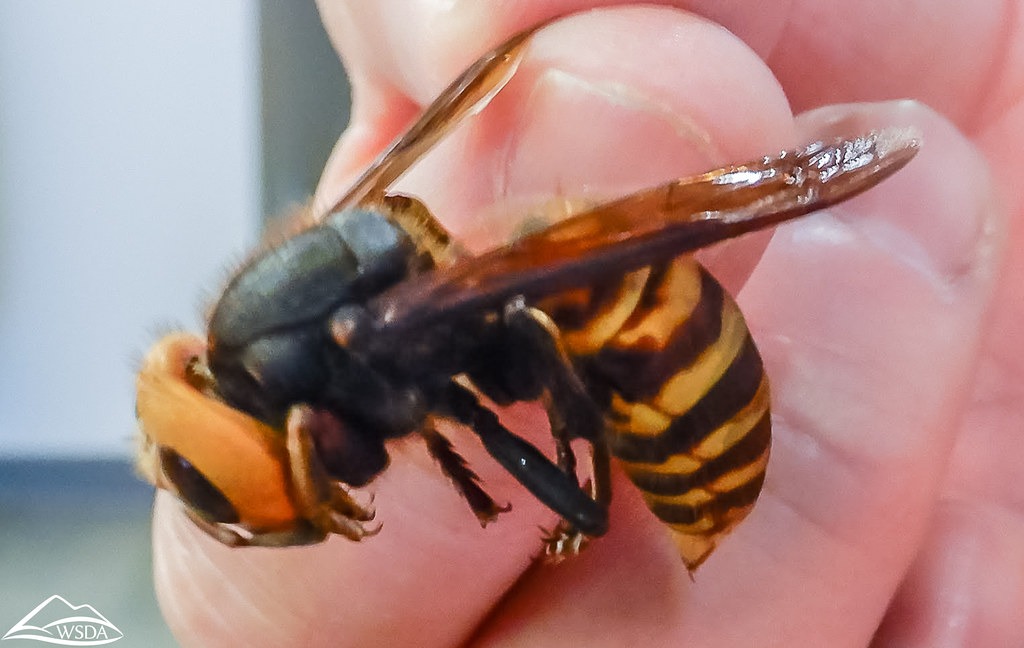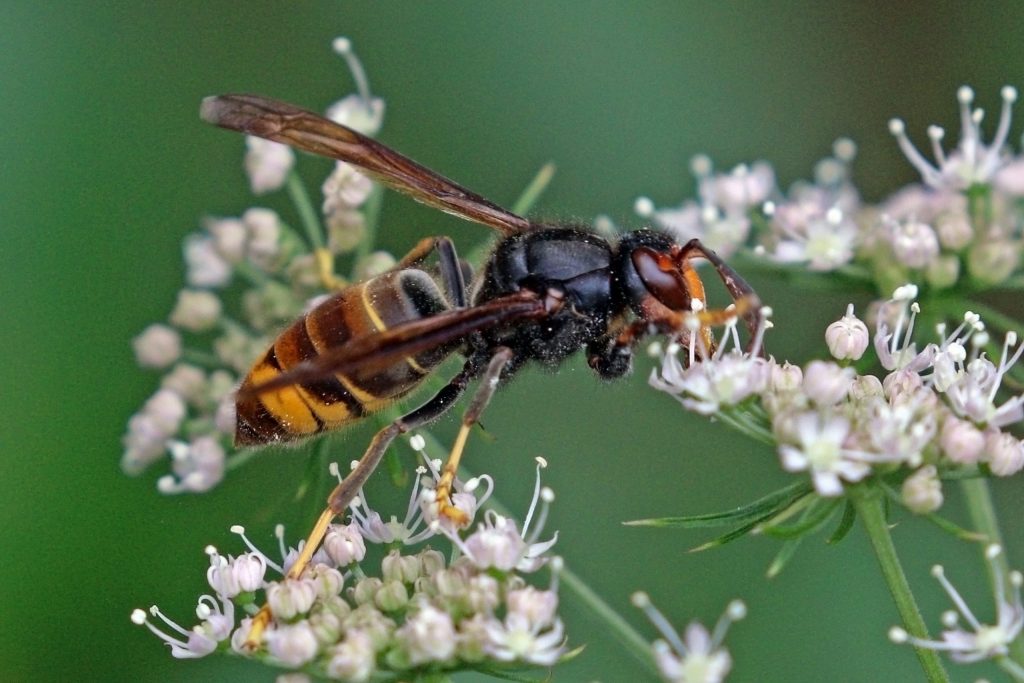Debunking the myths There was recently a press release put out about the effect of the Asian Hornet (Vespa velutina nigrithorax) on UK agriculture. This prompted several newspaper articles which, if it were not so serious, would have been laughable. On this page I want to undo some of the damage done by these ridiculous articles.
Myth One: It is enormous! This insect is so big it would fill your hand. One newspaper said that there are insects the size of mice flying around Kent. They must have very small mice in Kent!

The pictures which are used to illustrate this point are often those of the Giant Asian Hornet (Vespa mandarinia) and yes it is big but no it is not the Asian Hornet.
It is, as it says, the Giant Asian Hornet. These are found in Japan though a nest was recently found on Vancouver Island, Canada. As far as I know none have been found in Europe. Any reports of finding it in Europe have been the Asian Hornet or the European Hornet which has been wrongly identified.
The Giant Asian Hornet (Vespa manadarinia) queen can grow up to 5cm long.The Asian Hornet(Vespa velutina) queen can grow up to 3 cms long. The Asian Hornet workers are 2.5cms long. This is half the size of the Giant Asian Hornet.
The European Hornet (Vespa cabro) queens can grow up to 3.5 cms long - and is already here and has been for a long time. The workers can grow to 2.5cms long So as you can see the Asian Hornet is smaller than our native European Hornet which has been with us for some time.
| Queen | Worker | |
| Asian Hornet (Vespa velutina) | 30mm | 25 mm |
| Giant Asian Hornet (Vespa mandarinia) | 50mm | 35 mm |
| European Hornet (Vespa cabro) | 35 mm | 25 mm |
Myth Two: One sting and you are dead!
No that is not true. One sting and you are in pain. One sting from a wasp and you are in pain. If you are not allergic then the sting from the Asian Hornet, the European Hornet, a Honey Bee or a wasp are all painful but not fatal.
If you are allergic to any of these insects then a single sting can be fatal.
There are differences though between the Asian Hornet and the Honey Bee. The Asian Hornet has longer sting and as a result the standard bee suit is not suitable protection. There has been a lot of research into the effect of the sting from the Asian Hornet. This one is an interesting paper from France. It appears there is little difference between the sting of the Asian Hornet and the sting from the European Hornet.
One difference is that if you are stung by an Asian Hornet then the chemicals in the venom will attract other Asian Hornets according to this research paper. Experience suggests that if you disturb a nest the whole nest will turn out to attack you. Most nests are high in trees but not always and care should be taken if there is a risk you may disturb a nest. This is well explained on the CABI site.
Myth Three: It is destroying our bees or as one newspaper puts it "7 nests in Britain as invasion rages on." No I don't think so. At present there are no known nests in Britain because if we knew of any would be in the process of destroying them. The current policy is to destroy all nests as they are found using specialist pest controllers. This is the "elimination" phase. Only if we get so many nests that we cannot destroy them all will be into the "containment" phase but that has not arrived yet.

So what is the truth?
- We have had nests of Asian Hornets in the UK
- All the nests we have known about have been destroyed within a few days of being found.
- There are no reports in the UK of hives of bees being destroyed t
- There have been no deaths from Asian Hornet stings in the UK.
What can you do?
- Download the Asian Hornet App onto your phone.
- Look for Asian Hornets when you are out in the garden
- Look for the Asian Hornets when out on your exercise.
- The Asian Hornet has a black body
- The Asian Hornet has a single yellow band near its tail.
- The Asian Hornet has yellow legs - lower part( long yellow socks?)
- It only flies in the daytime.
- If you see one try to get a photograph on your phone
- Report it using the app on your phone.
- Look on the BBKA site for more information.
- Find the nearest Asian Hornet coordinator and let them know.
- Read up more details on the Asian Hornet Action Team website.
What do you not do?
- Do not approach the nest if you see one.
- Do not antagonise the Asian Hornet
- Do not panic - it is not aggressive unless threatened.

